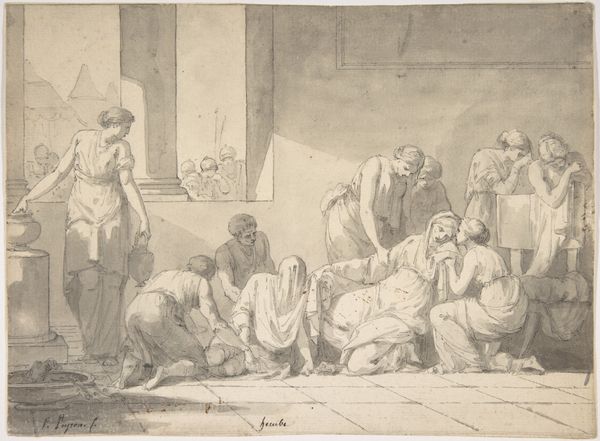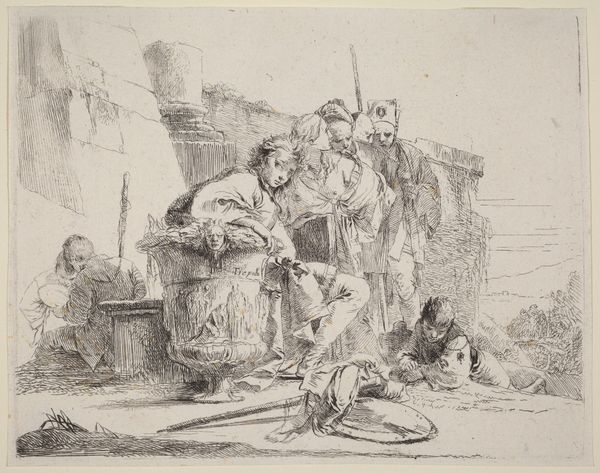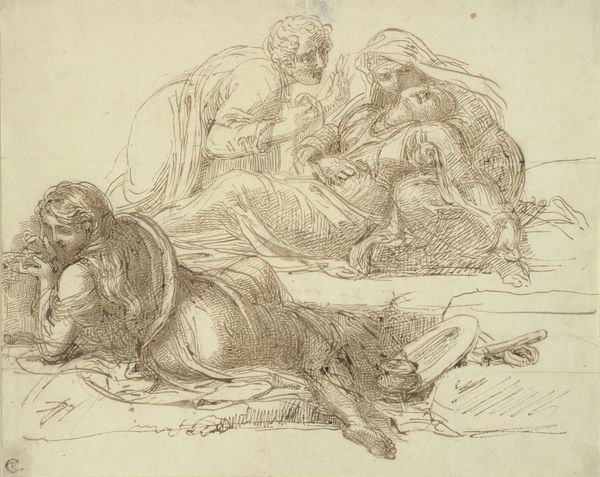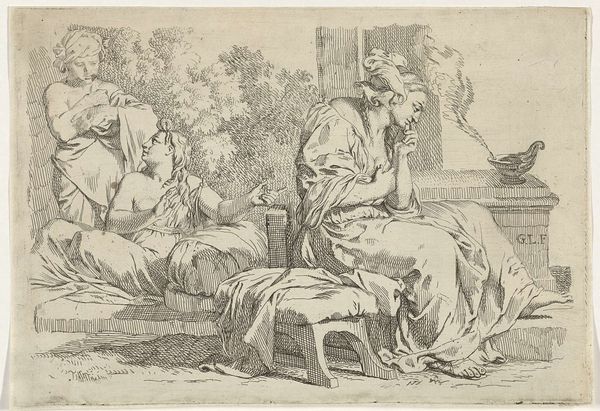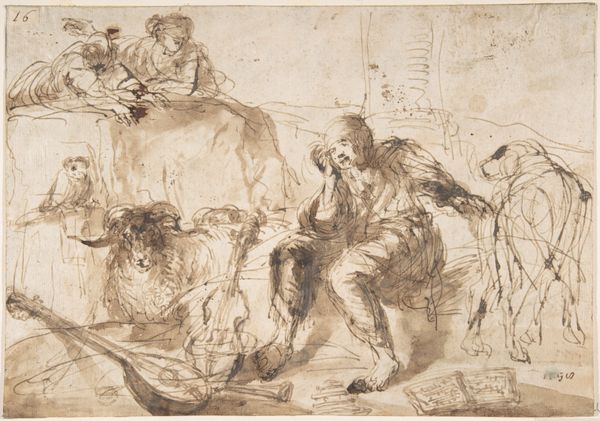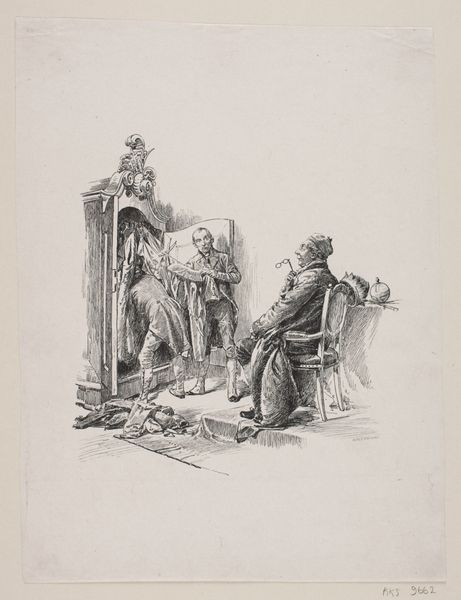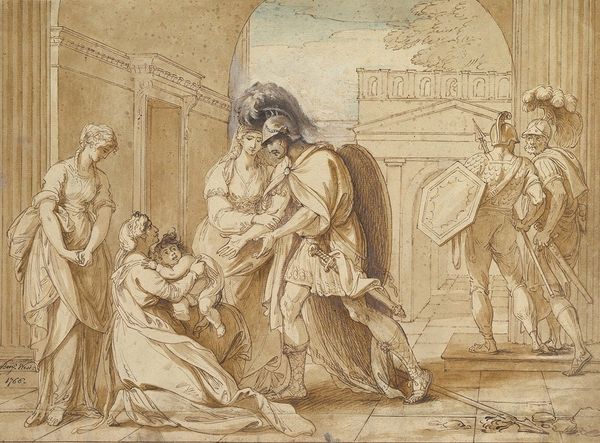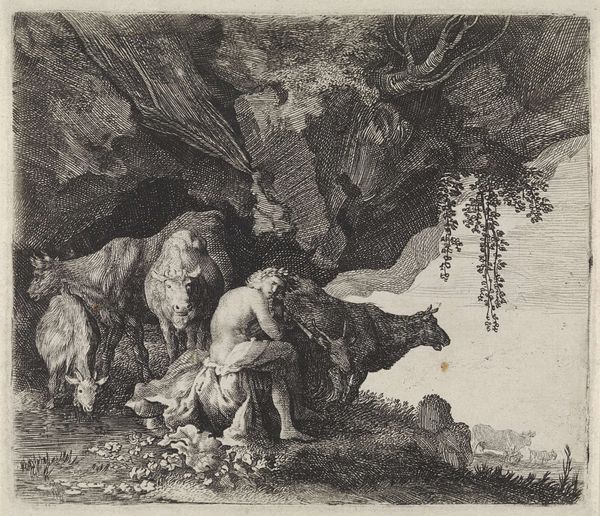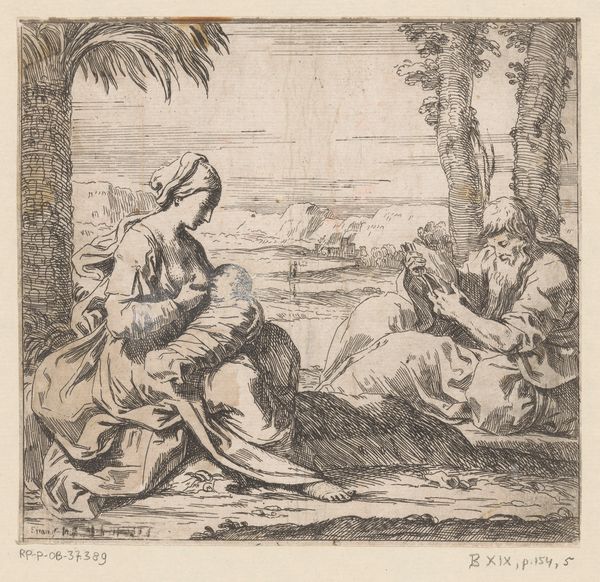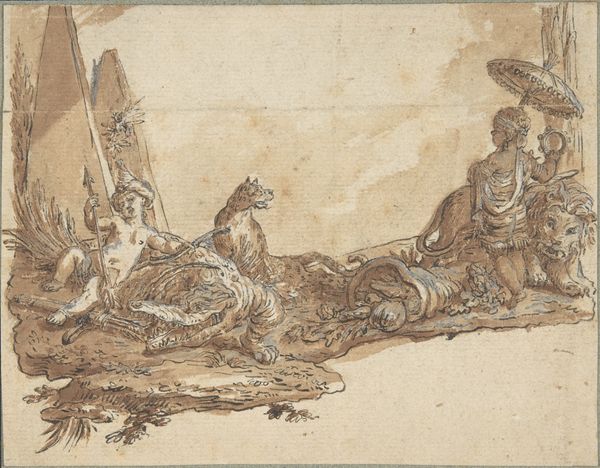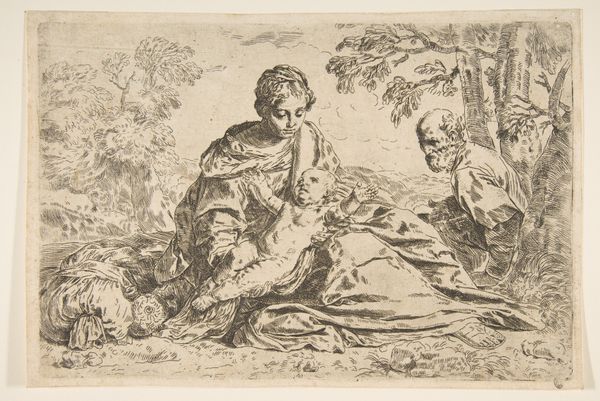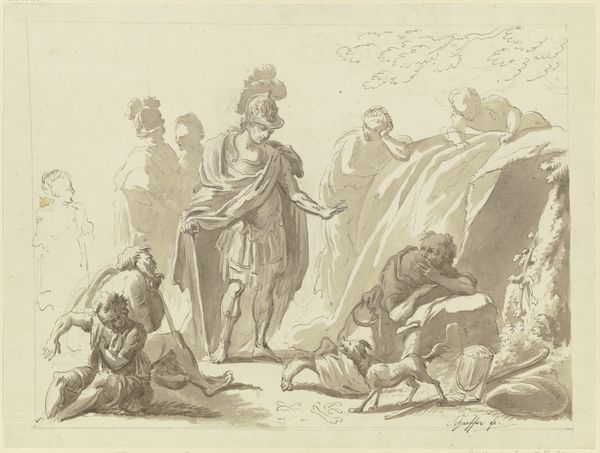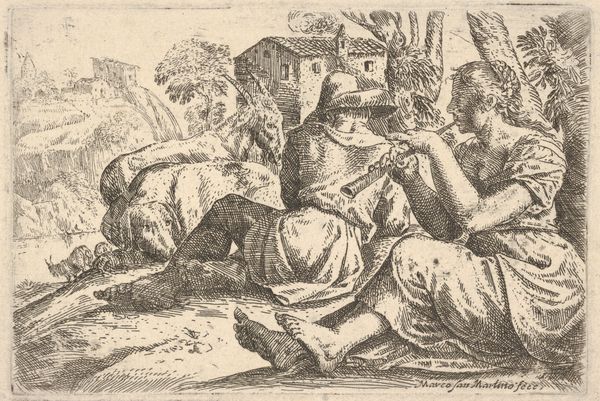
drawing, plein-air, watercolor
#
drawing
#
water colours
#
plein-air
#
landscape
#
figuration
#
oil painting
#
watercolor
#
orientalism
#
watercolour illustration
#
genre-painting
#
mixed media
Copyright: Public Domain: Artvee
Editor: So, this watercolor, "Camels Reposing, Tangiers," by Mariano Fortuny Marsal, probably made sometime between 1838 and 1874… it has this hazy, almost dreamlike quality. The camels seem so calm, and the colors are really muted. What stands out to you about this piece? Curator: Immediately, the orientalist aesthetic strikes me. Fortuny’s gaze is filtered through the lens of his time, a European fascination with the "exotic" Orient. It’s not merely a picture of camels; it’s an orchestration of symbols. Do you notice how the animals' passivity is framed by what appears to be an ancient architecture? Editor: Yes, now that you mention it, the architecture seems really aged and timeless, giving the piece a kind of historical weight. And there's a person there too! Curator: Precisely. That human figure becomes crucial. What feelings are conjured with the image of this local man overseeing these majestic animals in this almost melancholic, aged location? Perhaps feelings of power, stewardship... or something else entirely? Editor: I guess the relationship could be complicated, a bit of both respect and maybe even exploitation. Curator: Indeed. The image is carefully constructed. Fortuny, through his symbols, perpetuates a narrative, a story about Tangiers, about power dynamics, about a world that exists both as reality and fantasy within the Western imagination. Consider the repetition of archways—they almost function as gateways into different eras. How does that influence our viewing experience? Editor: Wow, I hadn’t considered all that! Seeing how he used symbols like that adds a whole other layer to the painting. I initially just saw resting animals! Curator: It’s the magic of art, isn’t it? To see beyond the surface and into the heart of the cultural narrative embedded within. We both learned something today. Editor: Definitely! I will never look at another orientalist painting the same way again.
Comments
No comments
Be the first to comment and join the conversation on the ultimate creative platform.

